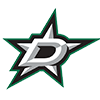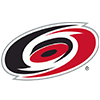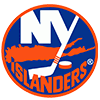As was the case last week, we'll go from discussing general philosophies for evaluating players on Underdog to applying those philosophies to specific players. This week, we'll examine pitchers in the first seven rounds of Underdog drafts to either target or fade. To briefly recap the general Underdog pitcher evaluation article published in mid-February: in the early rounds, we're looking for pitchers who have the potential to be elite per-inning producers and also show the durability to rack up the volume of innings necessary to be a contributor in a best-ball format. Later on in drafts, we can look to target pitchers who are likely to fall short in one of those areas.
Sign up for Underdog to receive a free 6-month subscription to RotoWire and first deposit match up to $100 with promo code RWMLB. Click here to claim this special offer now.
Pitchers to Target
Shane Bieber – ADP 40.9
Bieber offers nearly the perfect combination of strikeouts, run prevention and innings, and he doesn't carry the cost of an elite pitcher. In 2022, Bieber threw the eighth-most innings in the league and had the 15th-best strikeout rate and-12th best ERA among qualified starters. After an offseason of questions regarding the health of his shoulder prior to last season, he has a clean bill of health this spring and has already made one appearance, working two innings. Bieber's relative lack of strikeouts compared to elite starting pitchers will cap his ceiling, but he compares favorably to Sandy Alcantara, who goes an average of roughly two rounds earlier than Bieber.
Similar Pitcher: Framber Valdez (ADP 48.3)
Robbie Ray – ADP 65.4
If baseball enthusiasts were asked to name the top workhorse pitchers, Ray likely wouldn't be among the first names to jump to mind. However, he's topped 150 innings in five of the last six full seasons. In the last two years, he's combined to cover 382.1 frames. His statistical profile is also conducive to the format, as he had a 27.4 percent strikeout rate last season and has topped 30 percent four times in his career. Ray's in-game volume was also elite, as he worked at least five innings in 30 of his 32 starts. Similarly, he struck out at least five batters in 24 of his appearances, and racked up double-digit punchouts on seven occasions. His home run problem isn't going away, but Ray is likely to contribute regularly to fantasy team's weekly scoring and is an underrated source of value in the format.
Similar Pitchers: Kevin Gausman (ADP 62.3), Yu Darvish (ADP 60.2)
Lucas Giolito – ADP 94.1
Giolito falls slightly out of the ADP range set at the beginning of this article, but he's a good example of a pitcher with a strong track record who is coming off a down season and has an ADP depressed by recency bias. It's possible that Giolito continues to trend downward, but he remains in his prime (28-year-old season), had three seasons of nearly elite production and has reportedly refocused himself on getting into pitching shape and fixing his mechanics this offseason. The final point is subjective and is an oft-repeated narrative during the spring, but revised mechanics is what changed Giolito's career trajectory several years ago. He's currently the 29th pitcher off the board, but RotoWire rankings project him to finish 21st even with a 3.90 ERA. If he pushes closer to the mid 3.00s — where he sat from 2019-2021 — he'll return even more value. For those who don't buy into a Giolito bounceback, the same concepts apply to other pitchers who suffered from down seasons in 2022 such as Jose Berrios (128.2 ADP) and Lance Lynn (124.3 ADP).
Pitchers to Fade
Sandy Alcantara – ADP 20.6
While Giolito's down season created a buy-low opportunity, drafting Alcantara is a prime example of buying a player at their peak. Alcantara has proven himself plenty capable of suppressing runs, but he's never posted a strikeout rate above 25 percent in any meaningful sample in the majors. That gives him a smaller margin for error than other pitchers being drafted in the same ADP range such as Aaron Nola, Carlos Rodon and Max Scherzer. As discussed earlier, Bieber offers a very comparable profile — with more strikeout upside — but with an ADP a couple rounds later. Alcantara has thrown for at least 197 innings in each of the last three full seasons and topped 200 frames in each of the last two campaigns, so he isn't likely to sink best ball teams based on volume alone. On the other hand, with an ADP as high as his, drafters should be looking for more per-inning upside.
Jacob deGrom – ADP 29.8
DeGrom offers the contrasting case to Alcantara. He's clearly elite on a per-inning basis (posting strikeout rates of 45.1 percent and 42.7 percent in the last two seasons) but can't manage to stay on the mound. He's entering his age-35 season, joining a new team and has thrown a combined 224 innings across the last three seasons — fewer than Alcantara's total in 2022 alone. For those looking for tremendous per-inning upside with some inning risks attached, Spencer Strider comes at a comparable price (27.1 ADP).
Joe Musgrove – ADP 82.8
Musgrove serves as a two-part reminder to avoid injured players and follow spring training injury news carefully. He's already been shut down for at least two weeks and a report released Wednesday indicates Musgrove will miss a minimum of two starts during the regular season. Even after that point, there's no guarantee that he'll be ready to return immediately. It's inevitable that any team you draft will run into injury problems throughout the season, so there's no reason to take on additional injury risk that is already present. Tyler Glasnow (oblique) is another example of a pitcher who is currently sidelined and is destined to miss the beginning of the season. Instead of drafting either of these pitchers, there are a multitude of pitchers with volatile health histories later in the draft who have the potential to return strong value. Examples include Jack Flaherty (207.4 ADP), Andrew Heaney (212 ADP) and Nathan Eovaldi (193.8 ADP).







































